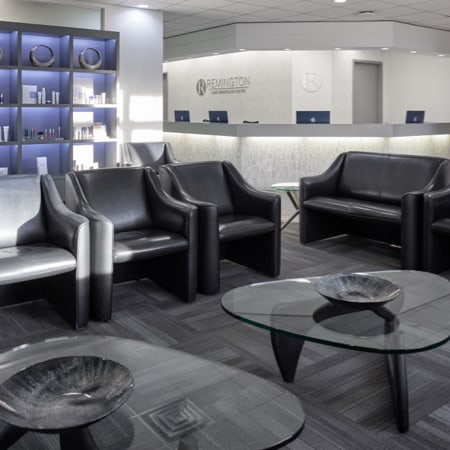The effective and safe use of the CO2 laser has been facilitated by advances in the Superpulsed and Ultrapulsed computerized laser systems…
The clinical use has not only been benefited by these lasers but a better understanding of the laser – tissue interactions, refinements in techniques, and expansion of the list of clinical indications. The use of the CO2 laser simplifies many procedures, is effective for treating an expanded number of cutaneous lesions and is the preferred treatment for an increasing number of others.
SELECTED USE OF THE CO2 LASER:
Superpulsed lasers and the new Ultrapulse computerized laser system:
I. Nevoid Lesions
- Aggressive Seborrheic Keratoses
- Aggressive Nevi
- Compound and Dermal nevi of the Face (Pigmented or Non-Pigmented)
- Dermatosis Papulosa Nigra
II. Pre-Malignant & Malignant Cutaneous Lesions
- Hypertrophic Actinic Keratoses
- Cutaneous Horns
- Keratoacanthomas
- Bowen’s Disease
- Basal Cell Carcinomas
- Squamous Cell Carcinomas
- Lentigo Maligna
- Malignant Melanomas
III. Inflammatory Lesions
- Pyogenic Granulomas
IV. Other Lesions
- Aggressive or Resistant Condylomata Acuminata
- Porokeratosis Plantaris Discreta
- Nevus Sebaceous
- Epidermal Nevi – Nevus Verrucosus
- Tuberous Sclerosis Lesions of the Face and Koenen’s Fibromas (nail folds)
- Bowenoid Papulosa (Genital area)
- Multiple Facial Milia and Sebaceous Hyperplasia
- Epidermal Inclusion Cysts – Sebaceous Cysts, Pilar Cysts
- Oral Lesions:
- a) Leukoplasia
- b) Fibromas
- c) Verrucae Vulgarii
- d) Mucous Cysts
- e) Oral Florid Papillomatosis
- Chondrodermatitis Nondularis Chronica Helicis – ears
- Facial Keloids
- Acne Keloidalis Nuchae – Nape Occiput
- Syringomas
- Xanthelasma (eyelids)
- Trichoepitheliomas
- Lipomas (focused mode)
The infrared – CO2 laser system is often used in the defocused mode as a vaporization tool but can be used as a surgical scalpel in the focused mode in excising lesions such as pilar cysts of the scalp, lipomas, sebaceous cysts, basal cell carcinomas, squamous cell carcinomas and numerous other selected conditions. This focused laser technique has made the upper eyelid transcutaneous blepharoplasty and the lower eyelid transconjunctival blepharoplasty a very tidy procedure; replacing the cold scalpel method. The advantage of having a bloodless field makes it possible to perform selected cutaneous surgery in patients on anticoagulants and patients with bleeding disorders. The laser sterilizes as it incises or vaporizes and does not interfere with pacemakers or electronic monitoring devices.
There are many other advantages of the CO2 laser as a surgical tool including limited destruction of surrounding tissue, rapid surgery, relative hemostasis during the procedure and a minimum post operative pain because of the sealing of nerve endings as opposed to just cutting them.
The CO2 laser results are often better than alternatives in the following conditions:
- In Patients:
- a) with bleeding disorders
- b) in whom Epinephrine or local anaesthetics are contraindicated
- c) requiring pacemakers or monitoring devices
- d) for whom blood loss may be life threatening
- Special Sites
- a) infected surgical sites
- b) vascular tissues
- Nevus Verrucosus – epidermal nevi
- Nail ablation
- Multiple giant appendage tumors:
- Neurofibromas
- Tuberous Sclerosis
- Trichoepitheliomas
- Syringomas
- Upper eyelid transcutaneous Blepharoplasties and lower eyelid transconjunctival Blepharoplasties.
The CO2 laser systems are now becoming the treatment of choice in treating:
- Rhinophyma
- Facial Keloid and Facial Hypertrophic scars
- Facial resurfacing Procedures
- a) saucer shaped scars with some modified pitted and atrophic scars
- b) facial wrinkling – elastotic actinic influenced
- Giant Condylomata Acuminata
- Pyogenic Granulomas
- Lower Lip Vermilionectomy procedure for Actinic Cheilitis and Leukoplakia
- Erythroplasia of Queyrat (Pre Cancerous Genital Lesions)
- Bowenoid Papulosa Lesions





























